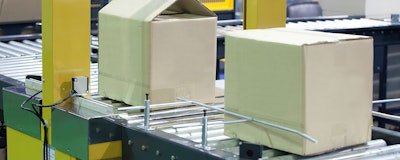
 Brent Halverson
Brent HalversonFaced with a tough economy and fierce competition, manufacturers today are adopting technologies to drive their reach into new markets. The development of e-commerce has opened the door to addressing not only their traditional B2B business partners but a whole new customer base in the form of the B2C individual consumer, converging what used to be two highly disparate markets. However, while embracing new innovations is crucial to retaining a competitive edge in a harsh business world, it also presents new challenges to overcome.
Facing the Challenges of E-commerce
Today, the e-commerce world is booming and customer expectations are high. With substantial resources at their disposal, large companies, such as Amazon and eBay, have the ability to provide services like next day or even same day delivery on purchases, leaving online B2C customers anticipating fast, accurate order fulfilment from every e-commerce site. If this demand cannot be met, a savvy consumer inevitably shops around for a better deal. Yet, manufacturers are accustomed to a distinctly slower order-to-delivery cycle with B2B customers. While B2C order-to-delivery cycles take on average only 2.5 days, the average time for delivery of B2B purchases is 9.4 days. Manufacturers must therefore have the company-wide, efficient processes in place to drastically change their order fulfilment cycles if they want to compete with the rapid service offered by these e-commerce giants. Unfortunately, this is frequently not the case. While purchases made through their web portal are automatically fed into their system, most manufacturers are also enduring the labour-intensive practice of manually processing the fax, email and print orders they still receive from their B2B customers. With staff hours taken up daily entering hundreds of sales orders line by line into their internal system, time and precious resources are inevitably diverted away from other critical business areas, such as the rapid fulfilment of orders.
Yet, resolving this by asking their longstanding B2B customers to change the way they do business is not acceptable. Most already have their own established internal processes in place, requiring purchase orders to receive against. Understandably, they do not want to duplicate effort by creating purchase orders in their own system and then re-entering the same, often large, order item by item again into the manufacturer’s web portal. With customer service paramount to retaining a loyal client, introducing a change that would require these customers to do more work for the sole benefit of the manufacturer would most likely prompt them to research other sources for their purchasing needs.
Manufacturers also face further risks by taking their transactions with B2B customers online. Once on the internet, the informative power of the search engine is at their fingertips. While taking the frustrating steps to enter their order line by line for the second time into the manufacturer’s e-commerce site, they may be motivated to use the opportunity to do a price comparison between the manufacturer and competitors who do not require as much effort from their customers to place an order. Moreover, bringing their B2B customers onto a browser-based web portal puts them in danger of being targeted by these same competing companies. With search data and product items saved in cookies, search engines, such as Google and Bing, can use this data to show a manufacturer’s customers shopping banners with specific items and prices alongside links to buy from a competitor’s site, ultimately enticing them to comparison shop.
So, confronted with both these threats to B2B customer loyalty and the pressing need to reach a new B2C customer base, how can manufacturers take advantage of e-commerce, while retaining their established customers?
Bridging the Gap Between B2B & B2C
While manufacturers cannot stop their B2B customers from comparison shopping, they can limit the opportunities for them to do so. A sales order automation solution is the ideal bridge to converge the B2B and B2C markets. Capturing critical invoice data with 100 percent accuracy, these solutions allow companies to treat email, fax and print orders like standard electronic documents. Once captured, the data flows into the company’s system and is automatically routed to the suitable channels with complete visibility. In this way, the laborious and time-consuming process of manual order entry is eliminated without the need to disrupt or change the way B2B customers communicate with the manufacturer. Thus, the dangers of bringing B2B customers online are averted, while valuable resources and staff time are also liberated to refocus onto more important tasks, such as the rapid order fulfilment required to entice B2C shoppers to make purchases.
Ultimately, in order to leverage the power of e-commerce technology to converge the B2B and B2C markets, companies will need new adaptive solutions, like sales order automation. Streamlining company-wide processes, it allows manufacturers to meet an increasing number of small-batch B2C orders without facing the risks of changing the way their traditional B2B customers do business. Manufacturers can then both expand their market reach to maintain their competitive edge and offer the high level of service that helps them acquire and keep their customer base.
Brent Halverson is President and CEO of ecmarket.























